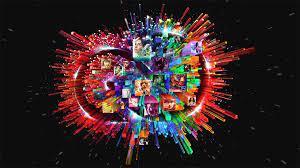Late one evening, a young designer stared at her screen, surrounded by half-empty coffee cups and sketches scattered across the table. She was working on a logo for a local bakery—something that needed to feel warm, inviting, and full of sweetness. After hours of experimenting with colors, fonts, and layouts, she finally found it—a perfect design that made the client’s eyes light up with joy. That moment captured the essence of graphic design—a blend of creativity, emotion, and purpose.
Graphic design is more than arranging visuals; it’s storytelling through colors, typography, and composition. Every poster, logo, or digital banner you see is a silent communicator, telling a story that connects brands to people on an emotional level.
Understanding the Essence of Graphic Design
At its core, graphic design is a creative process that combines art and technology to communicate ideas visually. It’s a discipline that balances aesthetics and functionality, ensuring that visuals not only look good but also serve a purpose. From branding to advertising, every design decision—from color selection to font choice—plays a critical role in shaping perception.
Graphic design influences how people feel about a product or company. Whether it’s the sleek layout of a website or the minimalist style of a business card, design has the power to evoke trust, excitement, or curiosity.
The Evolution of Graphic Design Through the Ages
From Print to Pixels
Graphic design has evolved dramatically since its early days in print media. Before the digital era, design was primarily done for books, posters, and newspapers. With the advent of computers and design software, the industry transformed—opening up endless possibilities for creativity and experimentation.
Today, designers use powerful tools like Adobe Creative Suite, Figma, and Canva to bring ideas to life. The shift from print to digital has not only expanded the medium but also changed how audiences engage with design.
The Role of Technology in Modern Design
Technology has redefined design workflows. Artificial Intelligence, automation, and data-driven design now enable creators to tailor visuals more effectively for different audiences. Designers can test variations, track engagement, and refine aesthetics in real time—something unimaginable just decades ago.
The Elements That Make Great Design Stand Out
Color and Emotion
Colors are the emotional backbone of design. A warm palette can convey friendliness, while cooler tones can suggest professionalism or calm. Understanding color psychology allows designers to align visuals with the desired emotional response of the viewer.
Typography and Voice
Typography gives words personality. A bold, modern typeface might speak of innovation, while a classic serif font can express tradition and trust. Good designers know how to pair fonts that communicate the right message while maintaining readability.
Composition and Balance
Composition is how all the design elements fit together. It guides the viewer’s eye and establishes visual hierarchy. Whether following the rule of thirds or using negative space effectively, strong composition ensures clarity and engagement.
Why Businesses Can’t Ignore Graphic Design
In today’s competitive digital landscape, first impressions happen in seconds. A business’s visual identity—its logo, website, and marketing materials—can make or break that impression. Consistent and thoughtful design builds brand recognition, trust, and loyalty.
Graphic design helps translate complex messages into simple, impactful visuals. For instance, infographics can turn dense data into digestible stories, while social media graphics can make a brand instantly recognizable among millions of posts.
Moreover, investing in professional design adds long-term value. It ensures a company’s visuals remain timeless, adaptable, and aligned with its evolving brand story.
The Creative Process of a Graphic Designer
Research and Conceptualization
Before any sketches or digital drafts, great design begins with research. Understanding the audience, brand goals, and message lays the foundation for effective creativity. Designers brainstorm, mood board, and experiment before narrowing down concepts.
Execution and Refinement
Once the concept is clear, it’s time for execution. Using design tools, the creative vision transforms into a tangible piece. Feedback and revisions follow, fine-tuning every pixel until it aligns perfectly with the project’s purpose.
Delivery and Impact
The final stage involves presenting the design in context—whether online, in print, or across social media platforms. The best designs resonate deeply, sparking emotion or action, and leaving a lasting impression.
The Future of Graphic Design
As trends and technology evolve, the future of design will continue to push boundaries. Motion graphics, augmented reality, and AI-generated visuals are reshaping how designers create and how audiences experience visual content.
Despite these changes, the heart of graphic design remains the same—communicating meaning through visual storytelling. The tools may evolve, but creativity, emotion, and connection will always be at its core.
Conclusion
Graphic design is more than just visual decoration; it’s a language that speaks without words. From ancient cave art to modern digital interfaces, design has always shaped how humans perceive and connect with the world. The next time you see a logo, poster, or ad, take a moment to appreciate the creativity and thought behind it—it’s not just a picture, but a story told in color, shape, and style.

